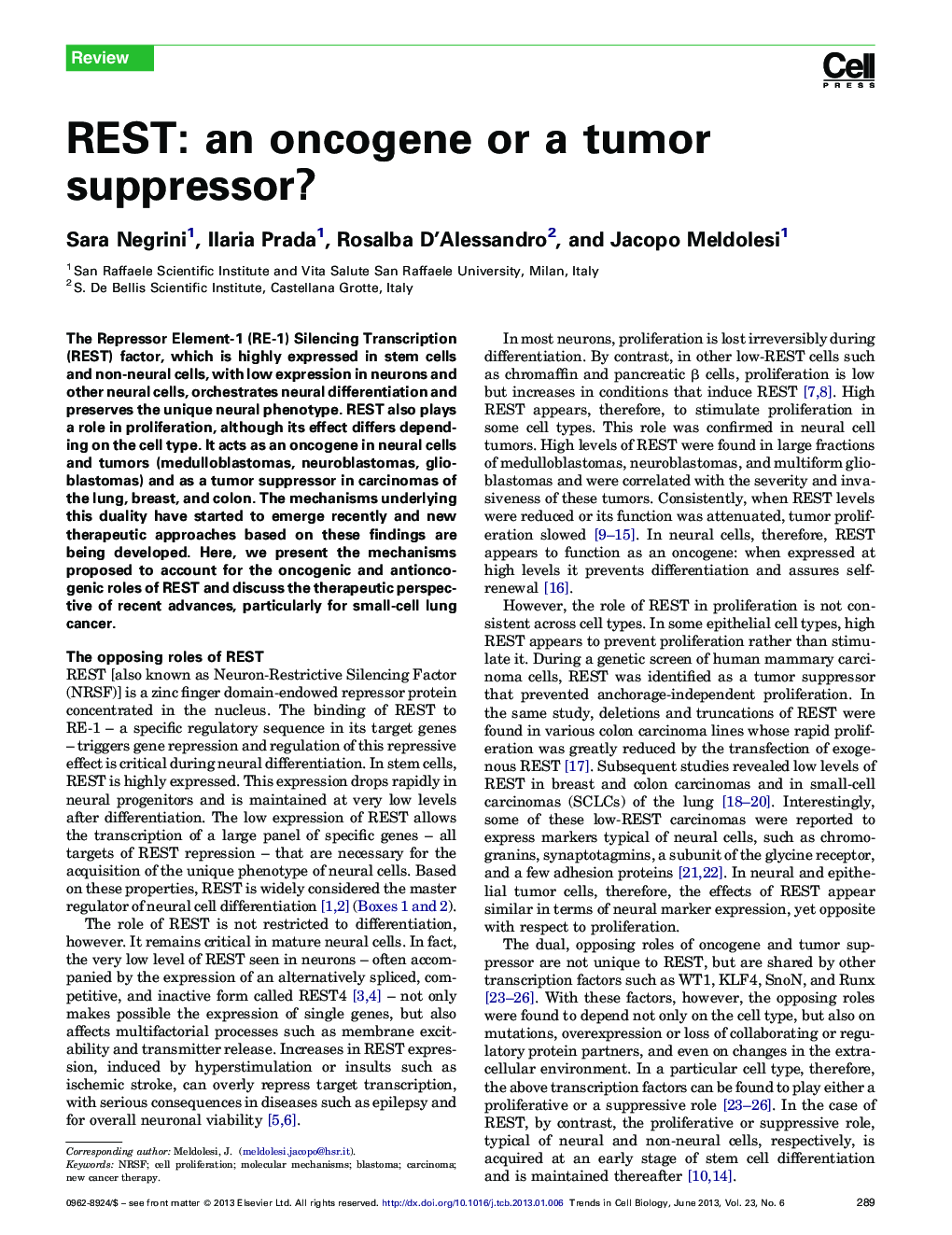| Article ID | Journal | Published Year | Pages | File Type |
|---|---|---|---|---|
| 2204505 | Trends in Cell Biology | 2013 | 7 Pages |
The Repressor Element-1 (RE-1) Silencing Transcription (REST) factor, which is highly expressed in stem cells and non-neural cells, with low expression in neurons and other neural cells, orchestrates neural differentiation and preserves the unique neural phenotype. REST also plays a role in proliferation, although its effect differs depending on the cell type. It acts as an oncogene in neural cells and tumors (medulloblastomas, neuroblastomas, glioblastomas) and as a tumor suppressor in carcinomas of the lung, breast, and colon. The mechanisms underlying this duality have started to emerge recently and new therapeutic approaches based on these findings are being developed. Here, we present the mechanisms proposed to account for the oncogenic and antioncogenic roles of REST and discuss the therapeutic perspective of recent advances, particularly for small-cell lung cancer.
